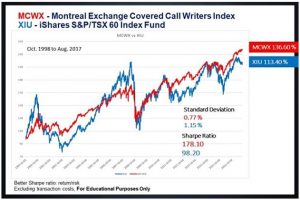Option Myths and Misconceptions

For those readers who are just beginning their options education journey, I am sure you have been presented with many opinions from other investors and investment professionals alike, regarding the value and risk that options bring to a portfolio.
Unfortunately, many myths and misconceptions have arisen due to a lack of understanding despite all the great educational material and guidance available today. Proactive investors who endeavor to learn the dynamics of the options market are still often discouraged by those who are misinformed.
In this article, I’ll be highlighting some of the more common myths and misconceptions with the intention in adding some clarity so that as you move forward in your educational journey, you can do so with a clear and objective understanding.
Myth 1: Options add more risk
The truth is, yes, there are risks associated with using options. This is true of all financial instruments.
The reality is that options can be used to meet all sorts of objectives and each strategy has its own risk/reward profile. Whether you are a buyer or a writer of an option, if you use a spread combination, if the option position is held in combination with the underlying security among other things, will all have a significant influence on the level of risk associated with using the option market. The investor must first fully understand the strategy and all its nuances before executing the trade. We control the risks through the decisions we make.
For an outline of the risk/reward profile of some of the more common strategies, you can access the Montreal Exchange’s Equity Options Reference Manual
Myth 2: Puts are riskier than calls
The reality is that Puts are priced identically to calls based on the potential for the underlying security to move higher and lower. As mentioned above, risk is at the discretion of the investor and will depend on the strategy selected. For example, a Naked Call Write (Selling the Call without holding the obligated shares) represents a greater risk exposure than a long put.
Myth 3: Options are a Zero-Sum Game and that means more risk
First, what is a “zero-sum game”? This is the theory that the gain of one participant is the same as the loss of another. For example, if the Call Buyer pays $1.00 and the Call Writer receives $1.00, when the call expires, the Buyer has lost the $1.00 and the Writer has gained $1.00.
The reality is that while options are a zero-sum game, it does not mean that there is a defined winner or loser. Consider that when a Covered Call Writer sells a Call for income, they may be assigned to deliver the shares to the Call Buyer who wishes to own them. In this case, both the Covered Call Writer and Call Buyer have successfully accomplished their objectives.
Myth 4: Most options expire worthless so buying options a bad idea
The reality is that this is directly dependent upon the strike price selected for the strategy. Out-of-the-money options do have a greater probability of expiring worthless and are priced accordingly. At-the-money options have a 50/50 probability of having a value on expiration or expiring worthless.
According to the Chicago Board Options Exchange approximately 10% of options are exercised during the expiration cycle, 55-60% of options are traded out before expiry to cut losses or lock in profits and 30-35% expire worthless. Once again, the outcome will depend on your strategy and contract selection as well as how you manage the position.
Myth 5: Covered Call Writing Underperforms
The profitability of the Covered Call strategy is a function of the market environment, stock selection and risk management. Statistics show that strategic covered call writing can not only increase returns but can also lower portfolio volatility and increase Sharpe Ratio which reflects the amount of return generated for every unit of risk.
Note in the analysis below, Covered Call writing on the XIU as reflected in the MCWX not only resulted in enhanced returns, but also a lower standard deviation and a higher Sharpe Ratio.

To conclude, these are just a few of the typical myths and misconceptions that you may be exposed to as you continue to educate yourself on the use of options. While there are risks involved, a lot can be controlled and managed though ensuring that you have taken the time to understand the trading characteristics of the option market thoroughly and only click the trade button when you are confident that you have selected the right strategy and contracts, know your risk exposure and have a plan to manage through the trade.
CEO and Director of Business Development
R.N. Croft Financial Group
Jason is CEO and Director of Business Development at R N Croft Financial Group, a member of the Croft Investment Review Committee and a Derivative Market Specialist by designation. In addition, he is an educational consultant for Learn-To-Trade.com and an instructor for the TMX Montreal Exchange.
One Comment
Leave a Reply
The information provided on this website, including financial and economic data, quotes and any analysis or interpretation thereof, is provided solely for information purposes and shall not be construed in any jurisdiction as providing any advice or recommendation with respect to the purchase or sale of any derivative instrument, underlying security or any other financial instrument or as providing legal, accounting, tax, financial or investment advice. Bourse de Montréal Inc. recommends that you consult your own advisors in accordance with your needs before making decision to take into account your particular investment objectives, financial situation and individual needs.
All references on this website to specifications, rules and obligations concerning a product are subject to the rules, policies and procedures of Bourse de Montréal Inc. and its clearinghouse, the Canadian Derivatives Clearing Corporation, which prevail over the content of this website. Although care has been taken in the preparation of the documents published on this website, Bourse de Montréal Inc. and/or its affiliates do not guarantee the accuracy or completeness of the information published on this website and reserve the right to amend or review, at any time and without prior notice, the content of these documents. Neither Bourse de Montréal Inc. nor any of its affiliates, directors, officers, employees or agents shall be liable for any damages, losses or costs incurred as a result of any errors or omissions on this website or of the use of or reliance upon any information appearing on this website.
BAX®, CADC®, CGB®, CGF®, CGZ®, LGB®, MX®, OBX®, OGB®, OIS-MX®, ONX®, SCF®, SXA®, SXB®, SXF®, SXH®, SXM®, SXO®, SXY®, and USX® are registered trademarks of the Bourse. OBW™, OBY™, OBZ™, SXK™, SXJ™, SXU™, SXV™, Montréal Exchange and the Montréal Exchange logo are trademarks of the Bourse. All other trademarks used are the property of their respective owners.
© 2024 Bourse de Montréal Inc. All Rights Reserved.

What option buyers need to understand is that options are “insurance” for them. While only a small percentage of options are exercised, same holds true for insurance policies — only a small percentage insurance policy holders will make a claim. You pay for insurance and EVEN if you don’t exercise it, there is a value in it — after all, you got what you paid for, you were insured the entire time of your option’s life.